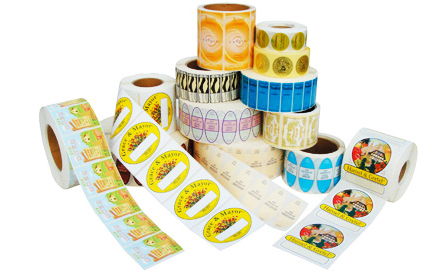Economies Of Scale With Label Printing
 There is a wide acceptance of the fact that unit costs are reduced as the size of a manufacturing run increases, allowing economies of scale. There are many other factors to consider, however, before rushing into an increase in output simply to reduce the unit cost. Other considerations have to include the potential demand for the goods, whether they have a limited shelf life and whether there are outside influences that might affect the potential market in the near future.
There is a wide acceptance of the fact that unit costs are reduced as the size of a manufacturing run increases, allowing economies of scale. There are many other factors to consider, however, before rushing into an increase in output simply to reduce the unit cost. Other considerations have to include the potential demand for the goods, whether they have a limited shelf life and whether there are outside influences that might affect the potential market in the near future.
In the UK, for instance, November 2014 saw an unprecedented increase in sales when the United States’ practice of “Black Friday” retail discounts was implemented, as this article from the BBC shows. It is possible that some of this increase was due to the extra hype in the media raising the public’s expectations. There was certainly a downside as scenes akin to mass rugby scrummages were seen on television news items as members of the public pushed their way to where the best bargains were advertised.
Some manufacturers, perhaps especially in the electrical goods and clothing industries, might be tempted to expect a repeat performance in the future and weight their production runs to be increased in the run up to Black Friday, to ensure adequate stocks being available, confident that the increase in production would bring down the unit cost sufficiently to warrant any extra overtime required. If this is the case in 2015, then another precedent would be set for an additional seasonal sale to add to the other occasions in the year to try to stimulate a higher footfall, such as Easter, summer, Boxing Day and January. There is always the risk, however, that the circumstances would be different, with the potential for unwanted stock, or redundant labels that refer to a past event.
Particular considerations for the fresh food industry
The situation is even more difficult for manufacturers whose products have a limited shelf life, such as the fresh food sector, which is why so many of these businesses have their own colour label printer from a company such as QuickLabel Systems.
Economies of scale are more difficult when it comes to fresh food, as there has to be a very secure customer base to justify the increased expenditure on plant, personnel or premises necessary to provide more goods. It is impossible, obviously, to store goods for any length of time to build up stocks in anticipation of seasonal increases in the market. Not every business making delicious bread and cakes is going to have the capacity to expand to the size of some of the household names that have huge factories.
In this situation, it could be better business practice to concentrate on building a reputation for high quality, niche market items. I recently attended a wedding where the cake was in the traditional three tiers, but with each tier showing penguins at play, sliding down icing slides, making snowballs, or just having fun. Each of the three tiers was also different, with one being the traditional fruit mix, one chocolate sponge and one plain sponge, to cater for all tastes and ages. On enquiring about where the cake had been made, it emerged that it was from a local baker’s shop who specialised in making unusual designs for special occasions. Needless to say, they always had a long waiting list!
With all the information that has to go onto a food label, an in-house label printer really does come into its own in the fresh food sector, as the “use by” date, for example, changes every day, as do the ingredients that have to be listed for each different item. In these circumstances, the term, “economies of scale” takes on a different nuance, as it is important to be able to print just the number of labels needed, so that there is no waste, as there almost certainly would be if the printed labels had to be ordered in from an outside source.
At the same time, if your products have long manufacturing runs, economies of scale can be achieved by having a digital label printer that can cope with printing many thousands of labels per hour. The trick is to ensure that all your equipment is fit for purpose and suits your needs.
Helena Blackburn ran her own small catering business for several years before having a family. With three young children under 12 she now finds it easier to work on a freelance basis and writes for a number of magazines and newspapers. She still enjoys creating interesting birthday cakes and other items for her children’s birthday parties.

 Delicious
Delicious Digg
Digg StumbleUpon
StumbleUpon Propeller
Propeller Reddit
Reddit Magnoliacom
Magnoliacom Newsvine
Newsvine
Comments
Post new comment